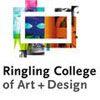1. University of Southern California, Los Angeles, California (Top 1% of schools considered)

The University of Southern California (USC) is home to USC Games—a collection of 10 minors and four degree programs leading to a BA, BS, MFA or MS. Programs are housed in the School of Cinematic Arts’ (SCA) Interactive Media & Games Division or the Viterbi School of Engineering, Department of Computer Science.
The USC Games Program combines the study of art, design, engineering, and production. Classes are collaborative, immersive, and hands on, allowing students to develop team-building skills and expertise in every area of game design and development. Courses are taught by working professionals in the field.
Specific degrees include a BA in Interactive Entertainment, BS in Computer Science (Games), MFAs in Interactive Media (Games and Interactive Entertainment) and Interactive Media (Games and Health), and an MS in Computer Science (Game Development). An MA in Cinematic Art (Media Arts, Games and Health) is offered in conjunction with SCA, the Graduate School and the Creative Media & Behavioral Health Center.
USC Games Minor Programs at the University of Southern California are designed for students who would like to develop entry-level game design and development skills that can be utilized in interactive media, animation, games, film/television, and other areas. Minor options include Game Design, Game Animation, Video Game Design and Management, Game Audio, Game Entrepreneurism, Video Game Programming, Game User Research, 3D Computer Modeling and Graphics, Computer Science, and Themed Entertainment.
Graduates of USC Games have developed and sold their own games, launched their own studios, or landed positions at major studios such as Riot Games, Disney, Epic Games, Apple, ESPN, and CBS interactive, among others.
The University of Southern California is accredited by the Western Association of Schools and Colleges (WASC) Senior College and University Commission (WSCUC). Established in 1880, USC serves 49,500 students across campuses and centers in Los Angeles (two campuses), Marina Del Rey, Orange County, Catalina Island, Alhambra, Sacramento, and Washington, D.C. The University of Southern California offers more than 600 programs housed in 23 schools, academic divisions, and institutes.
2. Carnegie Mellon University, Pittsburgh, Pennsylvania (Top 2% of schools considered)

The Entertainment Technology Center (ETC) at Carnegie Mellon University (CMU or Carnegie Mellon) houses a master’s program for game designers and a minor in collaboration with the Integrative Design, Arts, and Technology Network (IDeATe). Founded in 1998, the ETC is a partnership between Carnegie Mellon University’s College of Fine Arts and the School of Computer Science.
The ETC Master’s in Entertainment Technology (MET) is a terminal degree that takes two years to complete. The program explores everything from acting to worldbuilding. Specific required courses include Fundamentals of Entertainment Technology, Visual Story, and Improvisational Acting, Building Virtual Worlds. ETC MET students will also take electives from the following areas: Leadership & Innovation, Interactive Storytelling, Themed Entertainment, Game Design, and General. Possible elective options include Game Design, Prototyping and Production, Experience Design, Role Playing Game Writing Workshop, Entrepreneurship in ETC, and Advanced Pipeline Topics for Film and Game Art.
The ETC IDeATe Minor in Game Design is open to all majors at CMU. Note that the school has more than 7,000 major/minor combo options. Popular options for game designers include the BFA in Art/Game Design Minor, BS in Computer Science (CS)/Game Design Minor, the Bachelor of Computer Science and Arts (BCSA)/Game Design Minor, and the BS in Music and Technology/Game Design Minor. ETC also allows students across departments to enroll in individual courses to enhance their program of study.
Students in the ETC IDeATe Minor in Game Design will take courses that cover topics such as game programming, Interactive narrative and character development, user testing, computing, interface design, game systems and mechanics design, visual and audio design, teamwork, and the design process. The ETC IDeATe Minor in Game Design requires a minimum of 45 units of study.
Graduates of the Game Design Programs at Carnegie Mellon University are routinely hired by top companies such as Apple, Google, Microsoft, and Meta (formerly Facebook). Other employers include 2K Games, A3 by Airbus, and 31st Street Studios.
Carnegie Mellon University is accredited by the Middle States Commission on Higher Education (MSCHE). Founded in 1900, CMU serves more than 14,500 students enrolled in 200+ programs in seven colleges and schools. Carnegie Mellon University also has more than 20 research partnerships in Silicon Valley, Australia, Africa, and Qatar.
3. New York University (NYU), New York, New York (Top 2% of schools considered)

New York University’s (NYU) Tisch School of the Arts houses the Department of Game Design, home to The NYU Game Center and NYU Game Center Incubator. Founded in 2008, The NYU Game Center hosts events and programs such as the NYU Game Center Lecture Series, No Quarter Exhibition (est. 2010), and the professional game conference known as PRACTICE: Game Design in Detail. The Center also hosts workshops and tournaments.
NYU Tisch Game Center programs include BFA and MFA degrees in Game Design, and Minor in Games. The minor consists of 18 credit hours of study and it explores foundation game studies and other areas through elective coursework. Graduate students will complete a thesis project to be presented at the NYU Game Center Spring Show.
All programs at the NYU Game Center consist of immersive academic seminars and hands-on experiences in the Center’s development studios and play labs. Students may focus on programming, design, or visual design for games, game criticism, game art, or other areas.
A major component of the NYU Game Center is the internship program. Students have completed internships at Disney, Ubisoft, TreSensa, and Arkadium. NYU Game Center graduates will leave the program with a resume and several finished games.
New York University alumni are game artists, designers, and developers, entrepreneurs, AI engineers, and software publishers. They work at companies and studios such as Blizzard Entertainment, Riot Games, Amazon, Tencent, Take-Two Interactive, ESPN, Nickelodeon, and IGDA Japan, among others.
New York University is accredited by the Middle States Commission on Higher Education (MSCHE). Serving nearly 55,000 students, the school is one of the nation’s largest private universities. Founded in 1831 and offering an estimated 400+ programs, NYU has additional campuses in Abu Dhabi and Shanghai, and 11 global academic centers in Asia, Europe, Africa, North America, and South America. Tisch School of Arts was founded in 1956 as a school within New York University.
4. University of Utah, Salt Lake City, Utah (Top 3% of schools considered)

The Entertainment Arts & Engineering (EAE) Program at the University of Utah (The U) offers five programs for game designers. Degree pathways include BS degrees in Games and Computer Science, a Master of Entertainment Arts and Engineering (MEAE), and a 24 credit hour Minor in Games. The BS in Computer Science has an EAE Emphasis, and a three-year, 84 credit hour, dual MBA/MEAE is available.
The EAE Programs at The U are interdisciplinary and immersive with a focus on computational research, art, social science, and art. Course examples across EAE include Alternative Game Development, Ethics in Games, Assets Pipeline, Digital Content Creation, Traditional Game Development, Survey of Games, Programming, Scientific Computing, Machinima, Serious Game Development, Algorithms, Game Engineering and Production, and Competitive Strategies.
Students in the programs will work through every level of game creation and they will graduate with one or more completed games. Depending on the program, EAE graduates will be prepared to pursue positions in game art, design, development or engineering, simulation or edutainment, business (games), and visualization, among others.
University of Utah is accredited by the Northwest Commission on Colleges and Universities (NWCCU). Founded in 1850, The U is Utah’s public flagship institution and a top-tier research university. University of Utah serves around 34,425 students, enrolled in more than 200 programs in 17 colleges and schools.
5. Rochester Institute of Technology, Rochester, New York (Top 4% of schools considered)

Rochester Institute of Technology (RIT) has a number of paths to study game design. Housed in the College of Art and Design is the School of Design, which offers a BFA in 3D Digital Design. Course examples for the program include Game Development and Algorithmic Problem Solving, Computer Science, Environment Design, Layers and Effects, and Modeling and Motion Strategies courses.
Within RIT’s B. Thomas Golisano College of Computing and Information Sciences (GCCIS) is the School of Interactive Games & Media (IGM), which offers BS and MS degrees in Game Design and Development. An Accelerated BS/MS is also available. All programs explore animation, math and science, interactive media, modeling, user interaction, and of course, game design and development.
Course examples across programs include Games for Change, Physical Computing & Alternative Interfaces, Casual Game Development, Systems Concepts for Games and Media, Game Engine Design and Development, Artificial Intelligence (AI) for Gameplay, Console Development, Level Design, Game Design and Development for Casual and Mobile Platforms, and Gameplay and Prototyping.
Seminars, game development and research studios, and independent study are also part of the programs. RIT IGM Game Design and Development students will also have the rare opportunity to complete two paid blocks of cooperative education, which will allow them to gain experience in the games industry through a full-time employment at a studio. Google, Cartoon Network, Electronic Arts (EA), Sony Interactive Entertainment, Epic Games, and Microsoft are just a few recent co-op companies. Students will also have the opportunity to develop and commodify their own games at RIT’s MAGIC Spell Studios.
Rochester Institute of Technology is accredited by the Middle States Commission on Higher Education (MSCHE). Dating back to 1829, the school has campuses in China, Croatia, Dubai, and Kosovo. RIT serves more than 19,000 students, making it one of the nation’s largest private universities. More than 200 programs are offered in 11 colleges and institutes.
6. University of Central Florida + Florida Interactive Academy, Orlando, Florida (Top 4% of schools considered)

The Game Design Programs at University of Central Florida (UCF) are housed in Nicholson School of Communication and Media (Games and Interactive Media Department) and the Florida Interactive Entertainment Academy (FIEA). Degree pathways lead to a BA, MA or Minor in Digital Media or an MS in Interactive Entertainment. The Digital Media Program has a Game Design Track and the MS in Interactive Entertainment has specializations in Programming, Modeling, Tech Art, Animation, Level Design, Tech Design, and Project Management.
All students have access to state-of-the-art production facilities, such as the 3,300 square feet MOCAP studio, where they have the opportunity to develop their own games (in teams) from start to finish. Internships and career development resources are also available. To date, more than 300 companies have hired UCF Games/Interactive Media and FIEA graduates. Examples include Marvel, Sony, Gameloft, Blizzard, Nintendo, Cartoon Network, Epic Games, Electronic Arts (EA), Google, Industrial Light & Magic (ILM), Blur Studio, Walt Disney Imagineering, Zynga, Unity Technologies, and Lockheed Martin.
University of Central Florida is accredited by the Southern Association of Colleges and Schools Commission on Colleges (SACSCOC). Founded in 1963, the school opened as Florida Technological University with just under 2,000 students. Today, UCF serves more than 70,000 students enrolled in nearly 240 degree programs, making it Florida’s largest university by enrollment, and one of the largest universities in the U.S.
7. University of California, Santa Cruz, Santa Cruz, California (Top 5% of schools considered)

University of California, Santa Cruz (UC Santa Cruz or UCSC) was the first institution in the University of California System to launch an undergraduate game major. Housed in the Jack Baskin School of Engineering (BSOE), and known as Games @ UC Santa Cruz, this intensive program has expanded to include MFA, MS, and PhD degrees.
Programs are offered at the UC Santa Cruz and Silicon Valley campuses and include Computer Science: Computer Game Design (BS), Art & Design: Games and Playable Media (BA), Digital Arts and New Media (MFA), Serious Games, Computational Media, and Games and Playable Media (MS degrees), Computer Science and Computational Media (PhD).
Students in all programs have access to Games @ UC Santa Cruz facilities and centers such as The Center for Computational Experience, Advanced Visualization and Interactive Systems, Ludo Lab, Critical Realities Studio, Software Introspection Laboratory, Expressive Intelligence Studio, ADL (Augmented Design Laboratory), Social Emotional Technology Lab, and The Other Lab.
Other program benefits include participation in the Annual Games Showcase, game design internships, and frequent studio tours. Undergraduates will complete a Capstone Project during the final year of their program and graduate students will complete a Thesis Project, Research Project, or both.
Graduates of the UC Santa Cruz Game Design Programs have gone on to establish careers in the industry at companies and studios such as Electronic Arts (EA), Tencent, Amazon, Universal, Google, TicToc Games, Method Studios, Ubisoft, TopGolf, and Hi-Rez Studios, among others.
University of California, Santa Cruz is accredited by the Western Association of Schools and Colleges (WASC) Senior College and University Commission (WSCUC). Established in 1965, the school provides 130 programs to a population of around 18,140 students. Programs at the University of California, Santa Cruz are offered in 10 colleges.
8. Savannah College of Art and Design, Savannah, Georgia (Top 6% of schools considered)

The Interactive Design and Game Development Program at Savannah College of Art and Design (SCAD) offers degree programs at all levels for game designers. Housed in the SCAD School of Digital Media, undergraduate options include a BA in Digital Media with Game Development and Interactive Design Tracks, a BFA in Interactive Design and Game Development (IDGD), and Minors in Concept Design for Animation and Games, Game UX, Interactive Design and Game Development, Concept Art for Games, and Mobile and Interactive Design. Options for graduate students include MA and MFA degrees in IDGD.
Programs are offered online via SCADnow, and at the Atlanta and Savannah campuses. The School of Digital Media at SCAD provides opportunities for game design students to gain hands-on experience through internships with local and national studios. Students will also work individually and in teams to complete projects in state-of-the art facilities such as the labs and SCAD Digital Media Center. And each quarter, students have the opportunity to interview and present their portfolios to professionals in the industry.
Past visitors have been affiliated with studios such as Electronic Arts (EA), Zynga, and Activision Blizzard. Graduates of the Interactive Design and Game Development Programs at Savannah College of Art and Design are routinely hired by these and other studios such as Epic Games, Sucker Punch Productions, and Firaxis Games, among others.
Savannah College of Art and Design is accredited by the Southern Association of Colleges and Schools Commission on Colleges (SACSCOC). With more than 100 degree programs and 75+ minors and certificate options, SCAD has more degree programs and specializations than any other art and design college in the country. Founded in 1978, Savannah College of Art and Design serves more than 15,000 students across campuses in Atlanta and Savannah, Georgia, and Lacoste, France.
9. DigiPen Institute of Technology, Redmond, Washington (Top 6% of schools considered)

DigiPen Institute of Technology (DigiPen) launched the world’s first bachelor’s degree in Video Game Technology and Development. The program has evolved and expanded to include BS degrees in Computer Science (CS) & Game Design, and Computer Science in Real-Time Interactive Simulation, and BA in Game Design. An MFA in Digital Art that prepares graduates for careers in animation and games is also available. The program, which allows students to customize a specialization, requires a final Thesis Project, which culminates with a professional portfolio.
Students in the DigiPen Game Design BA Program will explore interactive systems and game design, communications, user experience, and psychology. BS in Computer Science & Game Design students will study artificial intelligence (AI), system, level and technical design, user interface design, and programming languages.
BS in CS/Real-Time Interactive Simulation students will master software engineering, 2D and 3D simulation, engine technology, graphics rendering, graphical user interfaces (GUIs), artificial intelligence (AI), and programming languages.
For exceptional students, DigiPen offers an accelerated BS/MS Program that allows them to complete both programs in just five years. The BS in Computer Science in Real-Time Interactive Simulation degree program is accredited by the Computing Accreditation Commission of ABET.
Students in all programs will work in multidisciplinary teams in a studio environment to create software and a series of video games.
DigiPen Institute of Technology graduates enjoy a high job placement rate. To date, more than 600 companies have hired DigiPen graduates. A few examples include Epic Games, DreamWorks Interactive, Google, Amazon, Walt Disney Imagineering, SpaceX, Warner Bros. Interactive Entertainment, Microsoft, Electronic Arts (EA), ArenaNet, Bungie, Activision, Insomniac Games, Zynga, Sony Interactive Entertainment, Booz Allen Hamilton, Intel Corporation, Ubisoft Shanghai, and Take-Two Interactive.
DigiPen Institute of Technology is accredited by the Accrediting Commission of Career Schools and Colleges (ACCSC). Established in 1988, DigiPen serves 1,200 students enrolled in 10 degree programs in Game Design and Development, Digital Art and Animation, Engineering, Computer Science, Audio and Music. DigiPen Institute of Technology has international campuses in Singapore and Spain, and educational partnerships with Princess Nourah bint Abdul Rahman University in Riyadh, Kingdom of Saudi Arabia, Keimyung University in South Korea, The One Academy in Kuala Lumpur, Malaysia, and Thammasat University in Thailand.
10. Full Sail University, Winter Park, Florida (Top 7% of schools considered)

The Game School at Full Sail University features production studios and classrooms that look and feel like major production studios. Game School programs include a Game Design MS and BS degrees in Game Art, Game Development, Game Design, and Simulation & Visualization. Undergraduate Certificates in 3-D Arts and Game Design are also available. With the exception of the BS in Simulation and Visualization, all programs are offered on campus and online.
In addition to gaining production experience in a real-world studio environment on campus, Full Sail students have opportunities to work off-campus at local and national studios through the internship program. Courses in The Game School are also immersive. Course examples across all programs include Motion Capture, Game Mechanics, Game Production Tools, Engine Development, Artificial Intelligence (AI), and Data Visualization & Modeling. Students will master all roles in the production pipeline, video game development for computers, networks and consoles, test simulation, game effects, narrative design, and animation.
Full Sail University’s Career Development Department provides 24/7 access to job opportunities, along with workshops and presentations that cover branding, networking, research strategies, and interviewing techniques. The department also coordinates local hiring events and events in other major markets such as Los Angeles and New York.
Full Sail University graduates have worked on popular games, films, and ad campaigns. More than 150 graduates were credited on numerous nominated games at the 2021 Game Awards.
Companies and studios that have hired Full Sail graduates include Disney, Rockstar Games, Blizzard Entertainment, Industrial Light & Magic (ILM), Nickelodeon, Bunim Murray, Pixar, MTV, ESPN, Universal Studios, Miramax, DreamWorks, and HBO.
Full Sail University is accredited by the Accrediting Commission of Career Schools and Colleges (ACCSC). Full Sail serves approximately 21,000 students. The school offers certificates and degrees at the associate's, bachelor's, and master's levels in entertainment, technology, art, and media. Launched in 1979, Full Sail University is located just 35 minutes from downtown Orlando and Universal Studios.
11. Georgia Institute of Technology, Atlanta, Georgia (Top 8% of schools considered)

Georgia Institute of Technology (GeorgiaTech) offers programs for game designers in several colleges and schools. These academic units work together to advance the game community. In addition to the opportunity to select courses across departments, design students have access to the GVU Center Game Studio at GeorgiaTech, the Institute for People and Technology (IPaT), and international campuses in the world’s largest games industry—China.
The College of Computing and the School of Literature, Media, and Communication in the Ivan Allen College of Liberal Arts offer a BS in Computational Media (BSCM), MS and PhD degrees in Digital Media and a Minor in Computing & Media. A BS/MS in Computer Science is also available.
The Computational Media Program at GeorgiaTech launched in 2004 with just one student. Today, the program serves more than 300 students, making it one of the school’s fastest growing programs.
The BSCM Program offers focus areas such as Games, Interaction, and Narrative. Sample courses include Game Design as a Cultural Practice, Computer Animation, Principles of Interaction Design, and Constructing the Moving Image.
The Computing & Media Minor requires 19 credit hours of study, with elective course options such as Video Game Design and Programming, Digital Video Special Effects, and Information Visualization. Just a few required courses include Objects and Design, Computer Graphics, and Computer Organization and Programming.
Across all graduate level programs, courses may include Special Topics in Game Design, Human-Computer Interaction (HCI), Interactive Fiction, Experimental Media, Principles of Interactive Design, Pro-Seminar, and Project Studio. Graduate students will also complete an 8-10 week, full-time non-credit internship and a Thesis Project.
Graduates of the Digital and Computational Media Programs at Georgia Institute of Technology go on to establish successful careers in interactive design and game simulation, animation, special effects, robotics, and 3D modeling, among others.
Georgia Institute of Technology is accredited by the Southern Association of Colleges and Schools Commission on Colleges (SACSCOC). Founded in 1885, the school opened with just 129 students and one degree program—a BS in Mechanical Engineering. Today, GeorgiaTech serves nearly 40,000 students enrolled in more than 180 degree programs and minors in six distinct colleges and 28 schools.
12. Southern Methodist University, Dallas, Texas (Top 8% of schools considered)

Southern Methodist University (SMU) houses the SMU Guildhall, which launched in 2003 with 32 full-time students. When it opened, the Guildhall became the first graduate-level digital game development program of its kind. Today, the program has partnerships with hundreds of studios and companies across the globe. Some 860+ SMU Guildhall alumni have worked at more than 270 studios worldwide.
A sampling of Guildhall industry partners includes Disney Interactive, Blizzard Entertainment, Gameloft, Insomniac Games, Riot Games, Unity, Bethesda Softworks, Samsung, Epic Games, Microsoft Game Studios, Bungie, and Gearbox Software, to name a few.
Other Guildhall highlights include professional development coursework, career fairs, guest speakers, workshops, lectures, mentorship programs, team game projects, and portfolio reviews.
Program offerings at SMU Guildhall include a Master of Interactive Technology (MIT) in Digital Game Development (thesis required) and a Professional Certificate in Digital Game Development (no thesis). Guildhall specialization options include Art Creation, Level Design, Production, and Software Development. To graduate, students will develop a minimum of three industry-ready 2D and 3D games.
Southern Methodist University has several additional program options for game designers. Meadows School of Art houses the Division of Art, which offers an Art BFA. In collaboration with the Guildhall, the BFA program allows students to add the Art Creation or Level Design Specialization offered in the MIT Digital Game Development Program.
Lyle School of Engineering houses the Computer Science Department, which offers a BS in Computer Science. Core requirements for the program include Programming Languages, Assembly Language Programming and Machine Organization, Digital Computer Design, Graphical User Interface Design and Implementation, and Software Engineering Principles.
Students may add the 10 credit-hour Game Development Track, which consists of Programming for Commercial Game Engines, Software Development for Games, Team Game Production, Math and Physics, and the final Gaming Design Project.
Southern Methodist University is accredited by the Southern Association of Colleges and Schools Commission on Colleges (SACSCOC). The school is also an accredited institutional member of the National Association of Schools of Art and Design (NASAD). Founded in 1911, SMU enrolls nearly 11,000 students from all 50 states, DC, and 90 foreign countries. SMU offers 250 programs at all degree levels across seven colleges and schools.
13. Drexel University, Philadelphia, Pennsylvania (Top 9% of schools considered)

The Antoinette Westphal College of Media Arts & Design (The Westphal College) at Drexel University (Drexel) has majors, minors, and accelerated programs for game designers. Options include Game Design and Production (BS), Game Design and Production/Digital Media (BS/MS), Interactive Digital Media/Digital Media (BS/MS), and Interactive Digital Media (Minor).
Accredited by the National Association of Schools of Art and Design (NASAD), The Westphal College programs are studio-based and hands-on. Small class sizes allow for individual instruction and the cooperative (co-op) education program enables students to gain work and world experience prior to graduation. Co-op experiences are local, national, and in places such as Hong Kong, London, Spain, Ghana, and Greece, among others.
The College of Computing & Informatics at Drexel University offers additional options for designers looking for a program that combines game development with computer science. Available pathways include BA and BS degrees in Computer Science (BAC, BSCS) and a 24 credit hour Computer Science Minor. The degree programs offer a Concentration in Game Programming and Development. Like The Westphal College programs, the Computer Science programs provide a hands-on curriculum combined with valuable co-op experiences. The programs end with a full-year capstone project.
Students in all programs have access to the Center for Games, Artificial Intelligence, and Media Systems (GAIMS Center), Drexel Game Design and the RePlay Lab, and the Entrepreneurial Game Studio (EGS).
Graduates of the Game Design Programs at Drexel University are prepared to pursue positions in pc, mobile and console game design, game art, simulation, education, training, and more.
Drexel University is accredited by the Middle States Commission on Higher Education (MSCHE). The Digital Media Programs are accredited by the National Association of Schools of Arts & Design (NASAD).
Established in 1891 as Drexel Institute of Art, Science and Industry, Drexel University serves nearly 23,600 students, enrolled in more than 200 degree programs in 15 colleges and schools.
14. DePaul University, Chicago, Illinois (Top 10% of schools considered)

The Game Design Program at DePaul University (DePaul) provides a number of options that allow students to study game design at all levels. Undergraduate pathways include BS degrees in Game Design, Game Programming, and Computer Science with a Game Systems Concentration. Graduate programs include an MFA in Game Design and an MS in Game Programming. The Game Design Program is housed in DePaul’s College of Computing and Digital Media (CDM).
Game Design at DePaul University emphasizes collaboration and interdisciplinary learning. Design students will have opportunities to work with fine art, audio, programming, and writing students. The curriculum includes coursework that helps students navigate the game production process from inception to the testing phase. Course examples include Game Development, Practical Scripting for Games, Animation, Game Sound Design, and 3-D Design and Modeling.
Students in all programs have access to the Virtual and Augmented Design Lab, game studio known as DePaul Originals, and CDM facilities such as gameplay, playtest and usability, and game development and research labs. Other program benefits include participation in a variety of exhibitions, internship opportunities at local and national studios, and the biennial Japan Study Abroad Program. Students will leave the DePaul Game Design Program with a portfolio of their best work.
Some of the top careers for DePaul Game Design graduates include game development, software engineering, computer graphics, animation, commercial production, and project management. Program alumni have been hired at companies and studios such as Epic Games, Leo Burnett, iiRcade, Fast Radius, Speegs Media, and TCS.
DePaul University is accredited by the Higher Learning Commission (HLC) of the North Central Association of Colleges and Schools (NCA). The school serves 21,670 students, making it the largest Catholic university in the U.S. Founded in 1898, DePaul University offers more than 300 programs across two campuses and 10 academic colleges.
15. Massachusetts Institute of Technology (MIT), Cambridge, Massachusetts (Top 10% of schools considered)

Massachusetts Institute of Technology (MIT) houses the MIT Game Lab, which helps students customize a plan of study that matches their goals. The Lab is also a research and development hub that designs games for research.
Besides opportunities to customize the curriculum, individuals interested in studying game design at MIT may do so through several programs that have the option to choose electives from any department or a built-in “cluster.” Examples include the Comparative Media Studies (CMS), and Computer Science and Engineering (CSE) Programs.
Housed in the School of Humanities, Arts, and Social Sciences (SHASS), the Department of Comparative Media Studies (CMS) offers programs leading to a BS or MS in CMS. The Games and Interactive Media Cluster consists of more than 20 game design course options.
The Electrical Engineering & Computer Science Department in the MIT Schwarzman College of Computing (MIT EECS) is the largest department at MIT. EECS offers BS and MS degrees in Computer Science and Engineering. Programs are highly interdisciplinary and emphasize lab work, research, on-campus team and independent projects, and off-campus internships with MIT partner companies. Programs explore software engineering, programming languages, human-computer interaction (HCI) and graphics, artificial intelligence (AI), machine learning, algorithms and theory, and computer systems.
Elective requirements allow students to take additional courses that focus on games. Courses may be offered within and outside the department. Examples from the CMS Department include Game Design Methods, Videogame Theory, Interactive Narrative, Imagination, Computation & Expression Studio, Game Design, Advanced Game Design Studio, Designing Interactions, Design and Development for Games and Learning, Games and Culture, Games for Social Change, Fun and Games: Cross-Cultural Perspectives.
The MIT Department of Brain and Cognitive Sciences (BCS) offers an additional program for designers looking to specialize in unique areas such as psychological games and behavioral change. The BS in Brain & Cognitive Science is offered in partnership with the EECS Department. And finally, students who are interested in the business side of game development or who would like to launch their own studios, can enroll in the BS in Business Program, housed in the MIT Sloan School of Management. The same rules apply. For both options, students may work with the MIT Game Lab to customize a focus area that aligns with their goals.
Massachusetts Institute of Technology MIT is accredited by the New England Commission of Higher Education (NECHE). The school was founded on April 10, 1861, just two days before the start of the Civil War. MIT serves nearly 12,000 students enrolled in more than 100 programs in five schools.
16. Gnomon School of Visual Effects, Hollywood, California (Top 15% of schools considered)

Gnomon School of Visual Effects (Gnomon) emphasizes hands-on production. Learning takes place in classrooms that replicate real production studios. Consisting of a 30,000 square foot facility, Gnomon also houses nine state-of-the-art computer labs, drawing studios, lecture spaces, cycloramas, dedicated sculpture labs, a green screen stage, and the Gnomon Gallery.
Program options include a BFA and Certificate in Digital Production. More than 35 ten-week courses are also available. Examples include Game Creation, Props and Weapons for Games, Dynamic Effects, Maya Modules, Character Rigging for Production, and Creature Animation.
The Gnomon BFA in Digital Production Program focuses on the 3D production pipeline for visual effects, games, and film. Students will also master industry software and tools such as Nuke, After Effects, V-Ray, ZBrush, Maya and Photoshop. A wide variety of elective options allows BFA students to create a specialization in any area of entertainment or production.
Gnomon BFA students may also choose to complete the 3D Generalist curriculum or the Game Art or Visual Effects Concentration. The program, takes four years to complete (full-time), with or without a concentration. Graduates will leave the program with a professional demo reel.
The Digital Production Certificate Program has five areas of emphasized study: 3D Generalist, Character and Creature Animation, Games, Visual Effects Animation, and Modeling & Texturing. The program takes two years to complete, full-time.
Gnomon School of Visual Effects alumni work at some of the world’s top studios. Examples include Framestore, WetaFX, Disney Imagineering, Walt Disney Feature Animation, Blizzard Entertainment, Amazon Game Studios, Pixomondo (PXO), Marvel, Industrial Light & Magic (ILM), DreamWorks, Electronic Arts (EA), Framestore, and Riot Games.
Established in 1997, Gnomon School of Visual Effects is accredited by the Accrediting Commission of Career Schools and Colleges (ACCSC). Located in Hollywood, California, Gnomon serves more than 500 students enrolled in BFA and certificate programs designed for students seeking production jobs in the entertainment industry. Individual 10-week courses are also offered.
17. Rensselaer Polytechnic Institute, Troy, New York (Top 15% of schools considered)

Rensselaer Polytechnic Institute (RPI) is a designated New York State Center of Excellence (NYSTAR) in Digital Game Development. Housed in the School of Humanities, Arts, and Social Sciences (HASS) is the Games and Simulation Arts and Sciences (GSAS) Department, which offers a BS in Games and Simulation Arts and Sciences, and MS and PhD degrees in Critical Game Design.
The GSAS Department emphasis interdisciplinary study. This allows students in all programs to explore 3D animation, music and audio for games, programming, software engineering, digital arts, and experimental game design. RPI GSAS students will also take courses in management and leadership, and they will work in teams to build games. Students will graduate from the Rensselaer Polytechnic Institute GSAS Programs with a professional portfolio of their creative works.
RPI GSAS alumni go on to establish careers in a variety of fields such as game design and development, animation, artificial intelligence (AI), visualization, interactive simulation, computer science, and fine arts, among others.
Rensselaer Polytechnic Institute is accredited by the Middle States Association of Colleges and Schools (MSA-CESS). Established in 1824, RPI is the oldest technological research university in the U.S. Serving more than 7,600 students, Rensselaer Polytechnic Institute offers 100+ degree programs in five schools.
18. Michigan State University, East Lansing, Michigan (Top 15% of schools considered)

Michigan State University (MSU) houses the College of Communication Arts and Sciences (ComArtSci) and the College of Engineering. Both offer pathways to study game design.
Serving more than 3,500 students, the College of ComArtSci houses the Department of Media and Information (MI)—home to the Game Design Program. Established in 2005, the program offers a BA in Games and Interactive Media, and an 18 credit hour Minor in Game Design and Development that can be added to the BA program or any other major at MSU. An MA in MI with a Games Studies and Design Focus is also available.
The BA program is project-based and explores topics such as the game design process, emerging interactive media, and production. Focus areas include Game Design, Games Graphics and Animation, and Game Development.
Sample courses for the program include Compositing and Special Effects, Building Virtual Worlds, Serious Game Design, Game Writing, and Media Sketching and Graphics. Students will leave the BA program with a professional portfolio of projects.
The Michigan State University MA in MI with Games Studies includes courses such as Game and Film Design Studio I-II, Interaction Design, Foundations of Serious Games, Interactive Usability and Accessibility: Design and Evaluation, and Theories of Games and Interaction Design. To graduate, MA in MI students must complete Master’s Thesis Research (4-6 credits) and the Master’s Project (4-6 credits). Graduates of the MA in MI Program are prepared for careers in 3D game design, UI/UX, and 3D technology, among others.
Michigan State University Games and MI alumni work for major studios such as Rockstar Games, Activision Blizzard and Blizzard Entertainment, Bungie, Insomniac Games, Electronic Arts (EA), and Ubisoft, among others.
The College of Engineering at MSU houses the Department of Computer Science and Engineering, which offers BS, MS, and PhD degrees in Computer Science. All programs offer a Specialization in Media and Information Studies with the option to take games-related courses offered in other departments. Students in all programs will also take courses in Systems Design and Analysis, Data Analysis and Applications, and Theory and Algorithms.
Michigan State University is accredited by the Higher Learning Commission (HLC) of the North Central Association of Colleges and Schools (NCA). Founded in 1855, the school began as the Agricultural College of the State of Michigan. Today, MSU is a land-grant research university that serves 49,695 students enrolled in more than 200 programs in 17 colleges and schools.
19. Ringling College of Art and Design, Sarasota, Florida (Top 15% of schools considered)

Following the studio model of teaching, Ringling College of Art and Design (RCAD) emphasizes learning by doing. Students in all programs at the school also benefit from visiting artists, industry internships, and other experiences that allow students to work on real projects with local businesses and studios.
For students seeking careers in the game design industry, RCAD offers a BFA In Game Art that attracts major recruiters from Epic Games, Blizzard Entertainment, and Riot Games. The program explores topics such as environmental design, professional practices, methods and technologies, and concept and creative problem-solving. Students will also work on projects in teams to develop collaboration and communication skills.
The Game Art BFA requires 48 credit hours in the major. This accounts for 40% of the coursework. Sample courses for the program include 3D for Games I-IV, Game Design I-II, Programming for Artists, and Visual Development for Games. BFA students will also take four courses leading to the development of a Game Thesis Project.
Graduates of the Ringling College of Art and Design Game Art BFA have gone on to establish successful careers at Blizzard Entertainment, Naughty Dog, Bungie, Inc., Rockstar Games, 343 Industries, and Bethesda Game Studios, among others.
Ringling College of Art and Design is accredited by the Southern Association of Colleges and Schools Commission on Colleges (SACSCOC). This private, not-for-profit art and design school dates back to 1931, when it was known as The School of Fine and Applied Art. Ringling College of Art and Design serves more than 1,600 students enrolled in 13 different majors leading to a BA or BFA.
20. University of California Los Angeles, Los Angeles, California (Top 15% of schools considered)

The School of the Arts and Architecture (UCLA Arts) at University of California Los Angeles (UCLA) is home to the Department of Design Media Arts (DMA). The department offers several multidisciplinary programs suitable for individuals seeking careers in game design. Option include BA and MFA degrees in DMA (BA DMA, MFA DMA). The undergraduate program explores everything from interactivity and motion to video and game design. Courses for the program are taught as studios of up to 22 students. Sample courses include 3D Modeling and Motion, Game Design, Tangible Media, Word + Image, and Video. DMA BFA students will complete a final project—the Senior Project—in Interactivity and Games, Video and Animation, or Visual Communication and Image.
The two-year UCLA DMA MFA requires a full year of thesis work. Students will work and learn through seminar and studio courses. All MFA students will have the opportunity to collaborate with instructors on research projects or work as teaching assistants.
In addition to the DMA programs, the University of California Los Angeles houses UCLA Extension and the UCLA Game Lab. UCLA Extension offers game design courses such as Developing Video Game Narratives, Unity: 3D Game Design and Game Engines, Composing Music for Video Games, Producing Commercials for Games, and 3D Real-Time Animation.
The UCLA Game Lab is a research center supported by the School of Theater, Film and Television, and UCLA Arts. All DMA and UCLA Extension students may participate in the lab, which hosts visiting artists and researchers, guest speaker events, and workshops.
University of California Los Angeles is accredited by the Western Association of Schools and Colleges (WASC) Senior College and University Commission (WSCUC). Founded in 1919 as the Southern Branch of the University of California, UCLA serves nearly 45,000 students enrolled in more than 200 across eight colleges and schools.
21. University of Texas at Austin, Austin, Texas (Top 20% of schools considered)

The College of Natural Sciences at University of Texas Austin (UT Austin) houses the Computer Science (CS) Department, which offers a BS in CS (BS CS) with a Game and Mobile Media Applications (GAMMA) Concentration. Graduate students may also study game design through the MS in CS (MS CS), and Five-Year BS/MS Integrated Program in Computer Science. In all options, students will study game technology and computer graphics. An internship and project-based capstone are also part of the program.
Students will also have opportunities to complete an internship with both local and national companies. Many internships lead to job offers.
A Game Design and Development curriculum was created in 2020 by the Department of Arts and Entertainment Technologies (AET) in the College of Fine Arts’ School of Design and Creative Technologies, the CS Department, and Moody College of Communication-Department of Radio-Television-Film (RTF). AET offers courses focused solely on gaming, the CS Department covers visualization and coding for games, and cinematic arts, emergent media, and narrative design coursework is offered through RTF Department.
Students may focus in games through minor programs and concentrations offered in all three departments.
The University of Texas at Austin is accredited by the Southern Association of Colleges and Schools Commission on Colleges (SACSCOC). Founded in 1883, UT Austin serves nearly 52,000 students, making it one of the largest universities in Texas. Across 18 colleges and school, the University of Texas offers 156 undergraduate degree programs with more than 170 fields of study, 139 graduate degree programs, and nearly 100 doctoral programs.
22. University of California, Irvine, Irvine, California (Top 20% of schools considered)

University of California Irvine (UC Irvine) offers a BS in Game Design and Interactive Media (GDIM) in the Donald Bren School of Information & Computer Sciences’ Department of Informatics. In addition to traditional game design and development techniques, the GDIM Program explores new and emerging technologies such as, human-computer interaction (HCI), and artificial intelligence (AI). Students will also study programming, data science, storytelling, and visual design through hands-on coursework. The program ends with a two-quarter capstone project. Students will complete the capstone under the guidance of industry mentors.
Graduates of the UC Irvine GDIM Program work in a variety of positions in the industry or they have gone on to pursue graduate study. Some have busy freelance careers and others have launched their own studios.
University of California-Irvine is accredited by the Western Association of Schools and Colleges (WASC) Senior College and University Commission (WSCUC). With more than 1,200 faculty members and 10,000 staff, UC Irvine is Orange County California’s largest employer. Established in 1965, the school serves more than 36,000 students enrolled in more than 220 programs in 18 colleges, schools, and divisions.
23. Texas A&M University, College Station, Texas (Top 20% of schools considered)

The College of Architecture at Texas A&M University (TAMU) is home to the Visualization Program (VISL or Viz Lab). Established in 1988, VISL consists of BS, MS, and MFA degrees in Visualization and a Game Development Minor. Across programs, student have opportunities to study game design through free electives or emphasis areas such as Gaming or Interactive Design. Students may also add the Game Development Minor.
Course options across Viz Lab degree programs include Principles of Design, 2D and 3D Visualization Techniques, Visual Studies Studio, and Computing for Visualization. The 16 credit hour Game Development Minor consists of courses such as Computer Graphics, Programming, Communication and Video Games, HCI, and Interactive Virtual Environments.
The VISL MS program has thesis and non-thesis tracks. The thesis option is designed for students interested in games research development or entering a PhD program. The non-thesis track is a popular option for TAMU students who would like to focus on portfolio development in a specific area.
Texas A&M University VISL graduates are often hired at major studios such as Industrial Light and Magic (ILM), DreamWorks Animation, and Pixar.
Texas A&M University is accredited by the Southern Association of Colleges and Schools Commission on Colleges (SACSCOC). Established in 1876, TAMU is the state’s first public institution of higher learning. With more than 73,000 students, Texas A&M University is also one of the nation’s largest universities by enrollment. More than 400 degree programs are offered in 17 colleges and schools.
24. University of Texas at Dallas, Dallas, Texas (Top 20% of schools considered)

The School of Arts, Technology, and Emerging Communication (ATEC) at the University of Texas at Dallas (UT Dallas) is a research school that offers multidisciplinary STEAM (science, technology, art, engineering, and management) programs. Serving more than 1,800 students today, ATEC launched in 2015 after the merging of two departments: Arts and Technology and Emerging Media and Communication. Programs lead to the BA, MA, MFA, or PhD in ATC.
All ATEC Programs offer opportunities to study game design and development. For example, the ATEC BA has an Animation & Games (A&G) Concentration, and the MFA has a Game Development Concentration. Students may also create a specialization through electives and other courses.
Other ATEC Program highlights include access to the following studios and facilities: Game Lab, Motion Capture Studio, Games Research Lab, Surround Studio, The Studio for Mediating Play, Animation Lab, ATEC Lecture Hall, CG Animation Lab, 3D Studio, experimenta.l., Render Farm, Mixed Media Lab, Games and Media Library, Render Farm, Surround Studio, and the Narrative Systems Research Lab. The ATEC Lecture Hall has hosted speakers from Disney, Pixar, and DreamWorks.
Graduates of the ATEC Program at University of Texas at Dallas have been recruited by major studios and companies such as Pixar, Google, Capital One, DreamWorks, Apple, Toyota, and Disney.
University of Texas at Dallas is accredited by the Southern Association of Colleges and Schools Commission on Colleges (SACSCOC). Established in the 1960s by the creators of Texas Instruments, UT Dallas opened in the 1960s as the Graduate Research Center of the Southwest. University of Texas at Dallas is a member of the University of Texas System, serving nearly 29,700 students enrolled in more than 140 degree programs across eight schools.
25. University of Washington, Seattle, Washington (Top 20% of schools considered)

University of Washington (UW) offers a Certificate in Game Design in the College of Professional & Continuing Education (PCE). Designed for artists with at least two years of college experience who are interested in launching a career in game design or working designers and developers seeking advancement opportunities in the games industry. This three-quarter intensive program covers game design, game mechanics and systems design, and game studio roles and development.
The UW PCE Game Design Certificate was developed in partnership with the UW Bothell Digital Future Lab. The program is approved by the UW Bothell School of Science, Technology, Engineering & Mathematics.
For students seeking a degree, the University of Washington Paul G. Allen School of Computer Science & Engineering (CSE) undergraduate and graduate programs that offer access to four main labs in the Allen School: Graphics and Imaging Lab (GRAIL), Center for Game Science, Animation Research Labs, and the Reality Lab.
GRAIL provides opportunities to work with researchers from Adobe, Google, Intel, and Microsoft. The researchers at the CSE Center for Game Science create projects designed to solve problems through games. The multidisciplinary Animation Research Labs is a collaboration between CSE, the Department of Architecture, and the Schools of Art, Drama, Music, and the Center for Digital Arts and Experimental Media (DXARTS). Students have opportunities to interact with industry experts from Disney Animation Studios, Pixar, Industrial Light & Magic (ILM), Xbox Game Studios, and Bungie, among others.
In the UW Reality Lab, designers have opportunities to work on research projects in a variety of areas. Computer vision, lighting rendering, character animation, and 3D reconstruction are a few areas. Established in 2018, UW Reality Lab houses ongoing programs including The Reality Studio and The Reality Lab, courses, lectures, and the idea incubator.
Allen School CSE academic programs include BS degrees in CS or Computer Engineering, the combined BS/MS in CS or Engineering, the Professional Master’s Program (PMP), and a PhD in CSE.
University of Washington is accredited by the Northwest Commission on Colleges and Universities (NWCCU) and is a member of the Association of American Universities (AAU). Engineering at UW is accredited by the Accreditation Board for Engineering and Technology (ABET). Established in 1861, the University of Washington serves around 57,300 students across campuses in Seattle (main), Bothell, and Tacoma, Washington. UW offers more than 300 programs and 570+ degree options in 18 colleges and schools.
26. The Ohio State University, Columbus, Ohio (Top 20% of schools considered)

The College of Engineering and the College of Arts and Sciences at The Ohio State University (OSU) offer several programs that provide opportunities to study games.
In the OSU College of Engineering, options include BS, MS and PhD degrees in Computer Science (CS). A Computer Graphics and Game Design Concentration is available. In the College of Arts and Sciences, the Department of Art has BA and BFA Programs in Art with a Specialization in Art & Technology. The specialization explores art games, moving images, 3D modeling and animation, sound, emerging forms, and more.
Also housed in the College of Arts and Sciences is the Department of Design, which offers a Digital Animation and Interactive Media (DAIM) Track within the MFA Program. The Track requires 12 studio elective credits and six credits of interdisciplinary electives, allowing plenty of opportunities to create a focus in games. A Design Research and Development (DRD) Track, also within OSU’s Department of Design MFA Program, is a collaborative, interdisciplinary program that encourages study across departments, research areas, and themes. Open electives provide additional opportunities to explore games.
Examples of possible elective courses across programs and departments include Computer Game Art and Design, Video Games and Society, Computational Thinking in Context: Game Development or Images, Animation, and Games Virtual Modeling, Game Design I-II, Video Game Music, Esports and Game Studies, Philosophy and Videogames, Computer Vision for Human-Computer Interaction (HCI), Art and Technology, Screenwriting, and Artificial Intelligence (AI).
Graduates of The Ohio State University Art, Design, and CS Programs are prepared to pursue positions in everything from art and entertainment to technology and engineering. Possible job titles include Game Designer, Software Programmer, Virtual Reality Designer, Design Strategist, CG Specialist, Motion Graphic Designer, Interaction Designer, User Interface/User Experience Designer (UI/UX), and Human-Computer Interaction (HCI) Designer, among others.
The Ohio State University is accredited by the Higher Learning Commission (HLC) of the North Central Association of Colleges and Schools (NCA). Established in 1870 as Ohio Agricultural and Mechanical College, the school serves more than 61,000 students enrolled 200+ majors, minors, and specializations in 18 colleges and schools.
27. Worcester Polytechnic Institute, Worcester, Massachusetts (Top 20% of schools considered)

The School of Arts and Sciences at Worcester Polytechnic Institute (WPI) houses one of the nation’s first gaming programs—Interactive Media & Game Development (IMGD). Degree options for game designers include a BA, BS, Minor, and MFA in IMGD. A BS/MS in IMGD allows students to complete both degrees at an accelerated pace. Students can complete the program in four to five years.
The IMGD BA has Concentrations in Animation, 3D Sculpting, Design, Writing, and Technical Artistry. The BS allows students to begin working on everything from games and virtual environments to interactive fiction from the very first day of the program. The WPI MFA is an interdisciplinary, studio-based program that has three focus areas: Serious Games, Production and Management, and Technical. Students will leave the MFA program with a solo thesis project or a group project. In the WPI IMGD Minor, students may design a focus area consisting of six courses in game studies, animation, social impact of games, game design, and others.
All programs blend art, technology, and real-world experience through a co-op or internship. As part of Worcester Polytechnic Institute, IMGD graduates enjoy frequent on-campus recruiting events and a 92.7% success rate. Examples of companies that have hired WPI IMGD graduates include Kaon Interactive, Zudy, Centers Technology, NexGen Interactions, and NuVu.
Worcester Polytechnic Institute is accredited by the New England Commission of Higher Education (NECHE). Established in 1865, WPI is a top 25 STEM college, with more than 50 global project centers on six continents. Serving 7,230 students, Worcester Polytechnic Institute offers 70+ degree programs across four schools: Arts & Sciences, Business, Engineering, and The Global School.
28. Purdue University, West Lafayette, Indiana (Top 20% of schools considered)

Purdue University houses Purdue Polytechnic Institute, home to the Department of Computer Graphics Technology (CGT) and the Game Design Programs. Degree options include a BS in CGT with a Game Development and Design Major, an MS in CGT, and a PhD in Technology.
The CGT BS highlights immersive, collaborative projects with peers and professors, a STEM-based curriculum, and coursework that covers game design, programming, rendering, animation, and visualization. Past final projects have focused on games utilization in entertainment, for sustainable energy, medicine, and therapy, and for information visualization, to name a few. CGT BS graduates are game designers, technical artists, and animators. They work at Electronic Arts (EA), Volition, Inc., Zynga, and Riot Games, among others.
The Purdue Polytechnic MS in CGT has four specialization areas: Games, Animation, Information Visualization, and UX Design. Graduate students may also customize a plan of study to meet their professional goals. The program offers small class sizes, research opportunities, the chance to work on real-world projects. Graduates are game developers, UX designers, and technical directors, at places such as DreamWorks, Google, Deloitte, and Salesforce.
The PhD in Technology Program allows a minimum of 30 credit hours to be taken in a custom specialization, and 27 credit hours from any Purdue college or school other than Purdue Polytechnic. Courses may come from art and design, computer science, engineering, instructional technology, quality, and other areas. PhD students must complete a Thesis to graduate. Program alumni are educators, researchers, entrepreneurs, artists, and designers.
Purdue University is accredited by the Higher Learning Commission (HLC) of the North Central Association of Colleges and Schools (NCA). Established in 1869, the school serves nearly 50,000 students, enrolled in more than 400 programs in 10 colleges and schools—including Purdue Polytechnic Institute. Founded in 1964 as Purdue University’s School of Technology, the Institute serves around 6,000 enrolled in dozens of technology-centered programs across seven departments and schools.
29. Champlain College, Burlington, Vermont (Top 20% of schools considered)

The Champlain College Division of Communication & Creative Media houses a game design program that offers pathways to careers in all areas of the games industry. Known as The Game Studio at Champlain College, the program offers a BFA in Creative Media with a Game Media Concentration and BS degrees in Game Business and Publishing, Game Design, Game Programming, Game Art, Game Sound Design, and Game Production Management. An 18-credit Minor in Game Programming is also available.
Students in all programs benefit from small class sizes, courses taught by game industry experts, interdisciplinary, career-focused curriculums, and collaboration in a studio-like setting that mirrors today’s game studio environment. Study abroad experiences in Montreal, Canada, with internship opportunities at the Montreal Game Summit and the Montreal International Game Developers Association, are also part of the program, and students may also have opportunities to intern at places such as Xbox Game Studios and Wired Magazine.
During the final years of The Game Studio at Champlain College, students will develop a number of games that may be presented to recruiters from Gameloft, Activision, and Warner Bros., among others. BFA and BS students will also have opportunities to network with representatives from other major studios such as Sony, Insomniac, Rockstar, ArenaNet, Survios, Ubisoft, and Crystal Dynamics.
Champlain College is accredited by the New England Commission of Higher Education (NECHE). Established in 1878, the school serves 2,100 students enrolled in 111 subject areas including undergraduate majors, minors, concentrations, and design-your-own-major. In addition to Champlain College’s main campus in Burlington, Vermont, the school has campuses in Montreal, Canada and Dublin, Ireland.
30. North Carolina State University, Raleigh, North Carolina (Top 20% of schools considered)

The College of Engineering at North Carolina State University (NC State) houses the Department of Computer Science, which has a Game Development Track in the Computer Science (CSC) Program. The undergraduate program leads to a BS. For designers looking to earn a CSC BS and MS in a short amount of time, an accelerated Bachelor’s/Master’s (ABM) degree is available.
Students in all CSC programs have access to The Digital Games Research center (DGRc). Launched in May 2007, The DGRc engages in education and research in games and games technologies. In a collaborative environment, students can work on projects with game developers and games studio teams that focus on everything from mobile games to artificial intelligence (AI). Thanks to partnerships and licensing agreements with engine providers and game studios, NC State graduates are often hired by local game companies.
Other DGRc highlights include access to the new Games and Visual Narrative Suite, the Visual Narrative Initiative (VNI)— a research cluster established in 2015, and participation in the Game Developers Conference and Games and Visual Narratives Showcase.
North Carolina State University is accredited by the Southern Association of Colleges and Schools Commission on Colleges (SACSCOC). With more than 36,000 students and 9,000 faculty and staff members, NC State is the largest university in the University of North Carolina System. Established in 1887, North Carolina State University offers more than 300 degree programs in 11 colleges and over 60 academic departments.
31. Columbia College Chicago, Chicago, Illinois (Top 25% of schools considered)

The School of Media Arts at Columbia College Chicago (CCC) houses the Interactive Arts & Media (IAM) Department, which provides cross-disciplinary training in game development, animation, virtual reality (VR), programming, visual effects, user experience design, and app development. Students in all programs will work with traditional and emerging technologies to create games, animations, and immersive experiences.
IAM facilities include The Game Lab, Motion Capture Studio, Equipment Cave (assets: game consoles, equipment, digital cameras, and more), Sound Studio, Open Lab, and Animation Production Spaces.
Columbia College Chicago, School of Media Art IAM programs include BA degrees in Game Art and Game Design with Concentrations in Game Development and Game Sound Design, BA/BS degrees in Programming/Concentration Game Programming or Application Programming, and Minors in Game Art and Game Design.
Students in all programs will start developing games on the first day of class. The Games Studio Capstone provides opportunities for students to work in teams in an environment that mirrors a small, independent studio or a large studio. Final games are eligible to be presented at the Game Developers Conference (GDC) in San Francisco, CA, South by Southwest (SXSW) in Austin, TX, Industry Night at Columbia College Chicago, and the Chicago Toy and Game Fair.
CCC School of Media Arts, IAM graduates are game designers, sound effects designers, quality assurance testers, game programmers and coders, simulation designers, and serious game designers. Program alumni have established careers at companies and studios such as Pixar, Sony, Weta Digital, Bungie, NetherRealm Studios, Iron Galaxy, Jellyvision, High Voltage Software, Incredible Technologies, John Deere, and Walmart.
Columbia College Chicago is accredited by the Higher Learning Commission () of the North Central Association of Colleges and Schools (NCA). Founded in 1890, Columbia, is a private, non-profit college that serves 7,000 students enrolled in more than 150 majors, minors, and graduate programs. Academic pathways at Columbia College Chicago are offered in the creative and media arts, liberal arts, and business.
32. The New School Parsons, New York, New York (Top 25% of schools considered)

The School of Art, Media, and Technology (AMT) at The New School Parsons (Parsons) houses a Design and Technology (DT) Program with options leading to a BFA or MFA in DT. Programs in the School of AMT are STEM-designated and provide networking opportunities and collaborations with external partners, studios and lab courses led by working artists and designers who are experts in their fields, and internship opportunities with local and national companies.
The DT BFA offers informal pathways made up of Game Design Pathway that consists of electives, Core Studio and Core Lab courses. Like all undergraduate programs at Parsons, the first year of the BFA will cover the liberal arts, and art and design concepts such as drawing, digital design, and 2D and 3D processes. All first-year students at Parsons, regardless of major, will take their required courses together.
The studio-based MFA in DT consists of Collaboration Studio and Thesis Studio courses. In Collaboration Studio courses, students will work with partner companies on real-world projects. Examples of past partners include Apple, the Whitney Museum of American Art, Samsung, NASA, Intel, Red Bull, and Mozilla.
The New School Parsons is accredited by the Middle States Commission on Higher Education (MSCHE). Founded in 1896, the school serves more than 10,000 students enrolled 100+ degree and diploma programs. The New School Parsons has campuses in New York City, Paris, Shanghai, and Mumbai.
33. University of Florida, Gainesville, Florida (Top 25% of schools considered)

University of Florida (UF) houses the UF College of the Arts. Established in 1925, the college is home to the Digital Worlds Institute, which offers a BA in Digital Arts & Sciences (BADAS), a DAS Minor or a Masters in Digital Arts and Sciences (MiDAS). UF Online offers a fully online BADAS Program. Institute features include the DAS Mentorship Program, guest lecturers, access to LUMA at Digital World Studios, and Portfolio Open House events.
All UF Digital Worlds Programs combine arts, engineering, communications, and science. Course examples across pathways include Creating Mobile Games, 3D Animation Techniques, Game Content Creation, Game Systems Development, Game Design and Production, Digital Storytelling, Game Development, and Interaction & Usability. An optional internship is also offered. The undergraduate program requires 120 credit hours of study and successful completion of a final DAS project.
The UF Digital Worlds Institute MiDAS Program explores game engines and development, software and hardware integration, design and interactivity, emerging technologies such as AR/VR, and proposals, project management, and production pipelines. The program is offered in an accelerated format, so it takes just one year to complete.
Graduates of the BADAS and MiDAS Programs at University of Florida are freelance designers, entrepreneurs, game designers, character modelers, production coordinators, level designers, technical animators, visual effects artists, software engineers, motion graphics animators, digital storytellers, UI/UX designers, and more. Program alumni have been hired at major companies and studios such as Microsoft and DreamWorks.
University of Florida is accredited by the Southern Association of Colleges and Schools Commission on Colleges (SACSCOC). The school opened as the Gainesville Academy in 1858. Today, UF serves nearly 58,000 students, making it one of the nation’s largest public universities by enrollment. University of Florida offers more than 300 degree programs across 14 colleges and schools.
34. Northeastern University, Boston, Massachusetts (Top 25% of schools considered)

Northeastern University (Northeastern) offers several programs for game designers in the College of Arts, Media and Design (CAMD) and Khoury College of Computer Sciences. Undergraduate options include BFAs in Game Design and Game Art & Animation, BS degrees in Computer Science and Game Development, and Game Design and Music with a Concentration in Music Technology. Game Art and Game Design Minors are also available.
Graduate programs include an MS in Game Science and Design and Certificates in Game Design and Game Analytics. The MS is jointly offered through CAMD and Khoury, and all programs at all levels are multidisciplinary.
Students in the game design programs at Northeastern will participate in the school’s distinctive co-op program. This experiential learning program allows undergraduate students to gain up to 18 months of hands-on, professional experience in game design. A graduate co-op program is available for full-time graduate students. Northeastern University partners with more than 20,000 co-op employers nationwide and in 65+ countries across the globe.
In addition to gaining work experience, students in all programs enjoy hands-on learning in collaborative classrooms and studios, access to state-ot-the-art production facilities, courses taught by industry professionals, and access to 3,350+ employer partners, including Fortune 500 companies, government agencies, and global companies.
Graduates of the Game Design Programs at Northeastern University work in game art, design, development, and sound, art and design, animation, technology, and more. Examples of alumni employer’s include Google, Microsoft Studios, Cognizant, and Zynga.
Northeastern University is accredited by the New England Commission of Higher Education (NECHE). Founded in 1898, the school serves around 33,700 students enrolled in 270 undergraduate majors, over 170 combined majors, and 150+ master's degree and certificate programs. Northeastern University degree programs are offered in nine colleges and schools.
35. Clemson University, Clemson, South Carolina (Top 25% of schools considered)

Clemson University’s College of Engineering, Computing and Applied Sciences houses the School of Computing, home to the Digital Production Arts (DPA) Program and the Division of Visual Computing. Program options across the Division and DPA include Computer Science BA/BS programs, the DPA MFA/MS (MFA DPA/MS DPA), and a fast-track Bachelor’s/Master’s (BS/MS) in Computer Science. Students can add a Minor in DPA for Animation and Game Design. Offered since 2011, the DPA Minor focuses on Games, Visual Effects, and Computer Animation.
Course examples across programs include 2D Game Engine Construction, 3D Game Programming: Algorithms and Techniques, Game Theory, Artificial Intelligence (AI), Advanced 3D Modeling, Studio Methods for Digital Production, Physical Modeling and Animation, Audio Practicum, and Visual Foundations of Digital Production.
Other Computer Science and DPA highlights include visits from representatives of major studios such as DreamWorks, participation in the SIGGRAPH Conference, access to state-of-the art production studios and facilities, internship opportunities, and study abroad experiences.
Graduates of the Computer Science and DPA Programs at Clemson have gone on to become game designers, animators, technical directors, art directors, 3D graphics programmers, AR/VR designers, and software engineers, among others.
Program alumni have secured positions with companies such as Google, Disney Animation, Electronic Arts (EA), Blur Studio, Sledgehammer Games, IBM, and CrowdStrike.
Clemson University is accredited by the Southern Association of Colleges and Schools Commission on Colleges (SACSCOC). The school opened as Clemson Agricultural College in 1893 with 446 students. Today, Clemson is a public research university that serves nearly 27,350 students enrolled in more than 210 degree programs and 90+ minors.
36. Indiana University, Bloomington, Bloomington, Indiana (Top 25% of schools considered)

The Game Design Programs at Indiana University Bloomington (IU Bloomington) are offered in the Luddy School of Informatics, Computing and Engineering and The Media School, housed within the College of Arts and Sciences. In the Luddy School, students can earn a BS in Computer Science (CSCIBS) with a Game Development Specialization. The school also offers a distinctive Minor in Animal-Computer Interaction, which includes course options such as Game Development, Game Programming, and Game Art and Sound. A BA in CS is also conferred from IU's College of Arts and Sciences.
The Media School at IU Bloomington is a multidisciplinary division that appeals to students seeking careers in game programming, animation, sound production, music composition, or graphic design for multimedia. The school allows students to select elective courses from the Luddy School, Eskenazi School of Art, Architecture and Design, and the Jacobs School of Music. The Media School offers a BS and a Minor in Game Design, a BA in Media, and a Certificate in New Media and Interactive Storytelling.
BA students may pursue a specialization such as Game Production, Game Audio, or Game Art. Elective areas are available for BS students who would like to form an area of expertise. Areas include Art, Games and Mind, Game Design Theory, Programming, Sound, Management, and Advertising and Public Relations.
During the last two years of study, game design students will work their way through the Game Workshop Sequence, which includes three workshops: Prototype, Demo, and Publish. Modeled after game studios, the sequence ends with an industry-ready published game.
Students in all degree programs, minors, and specializations have access to GameDev@IU. This student-run organization provides hands-on experience for student game designers. Highlights include the opportunity to collaborate on game design projects, workshops, and participation in game jams. Game design students can also gain valuable hands-on experience through the Indiana University Bloomington Internship Program. Students have interned everywhere from Google to General Motors.
Graduates of the Game Design and Media Programs at IU Bloomington are prepared to pursue positions such as game designer, game artist, world designer, game developer, creative director, software developer, and animator, among others. Potential employer’s include Electronic Arts (EA), Blizzard, Zynga, and Ubisoft.
Indiana University Bloomington is accredited by the Higher Learning Commission () of the North Central Association of Colleges and Schools (NCA). Established in 1820, IU Bloomington was one of the first public universities west of the Allegheny Mountains. Today, Indiana University serves more than 71,000 students enrolled in 930+ academic programs across seven campuses and two regional centers.
37. Miami University, Oxford, Ohio (Top 25% of schools considered)

The College of Creative Arts at Miami University (Miami Oh or Miami) houses the College of Creative Arts, home to the Department of Emerging Technology in Business + Design (ETBD)—formerly AIMS. Program options for game designers include a BA in Interactive Media Studies (IMS), and a BS and a Minor in Games + Simulation. Focus areas for the BS include Game Studies, Game Art, and Game Development.
The BA in IMS is a collaborative, interdisciplinary program that explores game design and development, augmented and virtual reality (AR/VR), user experience design (UX), and web app and development. Students may choose the between the Digital and Applied Concentrations. Both options require 64 credit hours in the IMS Major. Course examples include Introduction to Game Studies, Game Design, and Game Programming, Software Engineering for User Interface and User Experience Design, Advanced Interaction Design and Development, Highwire Brand Studio, Software Construction, and Art and Digital Tools.
IMS BA students will also complete three Collaborative Laboratory courses, the Interactive Media Studies Practicum, and the Senior Degree Project.
The Minor in Games + Simulation consists of 19 total credit hours, with collaborative courses between ETBD and the Computer Science and Art Departments. Electives within the program allow students to focus in a specific area such as Indie Game Development, Games and Learning, or Game programming.
Concentrations for the BS in Games + Simulation require 21 credit hours of study. The major consists of 76 credit hours. Course examples include Design Thinking & Principles, Game Studies, Game Usability & Human Factors, Advanced Game Design, Game Engine Scripting, and 3D Design. The program ends with the 12 credit-hour Capstone Studio, consisting of Game Pipeline and Production (three credits), Game Pre-production (three credits) and Game Production (six credit hours). In the Studio, game designers will produce an industry-ready game.
To gain valuable work experience in the industry, all students at Miami University may complete an internship at a local or national company. More than 20 local options are available for ETBD students. Examples include Wraith Games, Max Gaming Technologies, Funky Visions, Ganbaru Games, Multivarious Games, Green Door Games, and SGM Games.
Program graduates have continued on to graduate study or careers in game art, design or development, 3D modeling, writing for games, multimedia design, AR/VR, and UI/UX, among others.
Miami University Ohio is accredited by the Higher Learning Commission (HLC) of the North Central Association of Colleges and Schools (NCA). Established in 1809, Miami Oh is an original Public Ivy that serves more than 23,000 students across campuses in Oxford (main), Hamilton, Middletown and West Chester, Ohio, and Luxembourg (Western Europe). The main campus offers bachelor’s degrees in more than 120 areas of study and over 70 master’s and doctoral degree programs. Regional campuses also offer associate degree programs.
38. University of Wisconsin – Stout, Menomonie, Wisconsin (Top 30% of schools considered)

University of Wisconsin – Stout (UW-Stout) has several programs for game designers. The College of Arts, Communication, and Social Sciences (CACHSS) houses the School of Art and Design. Serving more than 1,000 students led by 60+ faculty members, the CACHSS School of Art and Design is the largest school of its kind in the entire upper Midwest. The school is also home to the Design Department and the BFA in Game Design and Development (GDD), and a cross-disciplinary MFA in Design.
The MFA that allows students to create their own focus area. Examples include Game Design, Animation and Digital Media, Interactive Media & UX, and Digital Cinema, Photography and Video. MFA graduates have been hired at Apple, DreamWorks Animation, Shutterfly, and World Architects, among others.
The GDD BFA consists of collaborative studios and hands-on experience gained at UW-Stout labs, studios, and other facilities. Students also gain field experience through study abroad courses in LA and San Francisco, internships, and industry projects with the Jim Henson Company, among others. GDD BFA students will complete a Game Design and Development Capstone and present a final portfolio of their best work at a public exhibition presented by the School of Art and Design.
BFA graduates have been hired at local studios and firms such as Pixel Spill Games, Big John Games, and Finn Daniels Architects. They are 3D artists, game designers, animators, building and environment modelers, and more. The GDD BFA at University of Wisconsin Stout is accredited by the National Association for Schools of Art and Design (NASAD).
The College of Science, Technology, Engineering, and Mathematics house the Mathematics, Statistics and Computer Science Department. Here, game design students can earn a BS in Computer Science (BS) with a GDD Concentration. The BS in CS is consists of a full computer science major, a Minor in Mathematics, and the concentration area. A 21 credit hour CS Minor that explores game design, programming languages, web programming, algorithms, and systems architecture is also available. The Minor provides opportunities to engage in Field Experience, Independent Study, or Cooperative (co-op) Education.
The BS in CS/GDD is accredited by the Computing Accreditation Commission of ABET. With a 100% job placement rate, the CS program is the only program of its kind in the world to be accredited by the agency. Serving 2,700 students led by 200 faculty members, the CS program requires co-op industry experience as part of the curriculum. Co-op students earn an average of $16/hour. Other program highlights include graduate research, the opportunity to publish in peer-reviewed papers, and participation in exhibitions, game conferences, film festivals, and game competitions.
Graduates of the UW Stout Computer Science Program hold titles such as Game Programmer, Game Software Engineer, Mobile Software Engineer, and Software Developer, among others. Companies and Studios who have hired Stout CS graduates include Big John Games (developer for Nintendo), HB studios (develops console games for Electronic Arts (EA)), Degica Japan (publisher of RPG Maker), Lockheed Martin, Boeing, and Concrete Software (mobile Games).
University of Wisconsin – Stout is accredited Higher Learning Commission () of the North Central Association of Colleges and Schools (NCA). Founded in 1891, the school opened as The Stout Manual Training School. Today, UW Stout is one of just 125 polytechnic universities in the U.S. and the only one in the State Wisconsin. Serving nearly 8,000 students, University of Wisconsin-Stout offers 45 undergraduate and 20 graduate programs. Many of these programs are not offered anywhere else in the Midwest.
39. Laguna College of Art and Design, Laguna Beach, California (Top 30% of schools considered)

Laguna College of Art and Design (LCAD) is a non-profit art and design school that offers BFA degrees and a Minor in Entertainment Design that covers Maya, ZBrush, concept design, storyboarding, and visual storytelling. An MFA in Game Design is also available, along with Specialized Minors in Augmented and Virtual Reality (AR/VR) and User Interface/User Experience (UI/UX). Across programs, students will work and learn in a project-based environment that encourages collaboration.
Course examples across programs include Advanced Drawing for Games, 3D Environmental Design, UI/UX for Games, Rigging and Animation for Games, Scripting for Games, Creatures and Characters, World Development, Entertainment Design for Entertainment, New Technologies, and Visual Storytelling for Entertainment.
Game Art BFA students will work in teams with the graduate MFA students to create industry-ready games that could be featured at the Independent Game Festival (IGF). Students will also participate in workshops led by artists and designers such as Chris Bateman, Bill Perkins, and Justin Thavirat. Entertainment BFA students will explore prop-making, concept design, 3-D digital tools, and model making. Like the Game Art BFA, the Entertainment BFA encourages collaboration. Team members will work in all areas from brainstorming to direction.
The Laguna College of Art and Design Game Design MFA is a two-year, terminal degree that leads to the creation of a final, marketable game. Courses explore areas such as game prototypes, game mechanics, game narrative, the game production cycle, game design processes, and the business of games.
Graduates of the BFA and MFA programs at LCAD are employed at major companies and studios around the globe. Examples include Riot Games, Insomniac Games, Disney Animation Studios, Obsidian Entertainment, Marvel, Blizzard Entertainment, DreamWorks, The Jim Henson Company, 20th Century Fox, Microsoft Studios, and Sony Interactive Entertainment.
Laguna College of Art and Design is accredited by the Western Association of Schools and Colleges (WASC) and the National Association of Schools of Art and Design (NASAD). Founded in 1961 as Laguna Beach School of Art (LBSA), LCAD has educational affiliates in California and around the world including the Florence Academy of Arts (Florence, Italy), Los Angeles Academy of Figurative Art, and Breda University of Applied Sciences (BUAS), Netherlands. Laguna College of Art and Design serves nearly 750 students enrolled several minors and specialized minors, and 10 BFA and MFA programs in the Visual Arts.
40. Academy of Art University, San Francisco, California (Top 30% of schools considered)

The School of Game Development at Academy of Art University (Academy of Art) has AA, BFA, BS, MA, and MFA programs for individuals looking to launch a career in game design. Specific program options include AA, BFA, MA, and MFAs in Game Development, and a BS in Game Programming.
STEM-certified, the School of Game Development operates under the direction of game design professionals. Programs at the school are all-encompassing, so student designers will explore animation/animation VFX, game, systems, and tools programming, coding, augmented and virtual reality (AR/VR), user interface/user experience (UI/UX) design, artificial intelligence (AI), coding, programming, rigging, concept art, 3D modeling, technical art, level design, and more.
Thanks to partnerships with studios such as Zynga, Sony Interactive Entertainment, and Riot Games, School of Game Development students have opportunities to gain real-world experience through an internship. In addition to working at a top studio prior to graduation, students will engage in hands-on learning in the Academy of Art Game Development Studio. Facilities include cross-departmental war rooms, esports and AR/VR labs, and more.
Academy of Art, School of Game Development alumni have been recruited by Sledgehammer Games, Naughty Dog, Crystal Dynamics, Riot Games, Zynga, and Sony Interactive Entertainment, among others.
Academy of Art University is accredited by Western Association of Schools and Colleges (WASC) Senior College and University Commission (WSCUC), and the National Association of Schools of Art and Design (NASAD). Family-owned, this private university serves more than 7,000 students, making it one of the nation’s largest independent art and design schools. Academy of Art University offers more than 129 degree programs in 40+ areas of study. Programs are housed in 22 schools and lead to the AA, BA, BFA, BS, B. Arch, MAT, MA, MFA and M. Arch degrees.
41. University of North Carolina—Charlotte, Charlotte, North Carolina (Top 30% of schools considered)

The Department of Computer Science (CS) at the University of North Carolina—Charlotte (UNC Charlotte) has several options for individuals seeking a CS-based game design program. Housed in the College of Computing and Informatics, programs include a BS in CS, AI, Robotics, and Gaming, an MS in CS with an optional AI, Robotics, and Gaming Concentration, and Game Design and Development (GDD) Certificates at the undergraduate and graduate levels. Coursework for the certificate programs may be used towards the BS or MS in CS programs.
Course examples across programs include Computer Science, AI for Computer Games, Virtual and Augmented Reality, Applied Machine Learning, Game Engine Construction, Game Design and Development Studio, Advanced Game Design and Development, Audio Processing for Entertainment Computing, Real-Time Rendering Engines, Individual Study in AI, Robotics, and Gaming, Computer Graphics, and Advanced Algorithms.
The College of Arts and Architecture has another option for designers seeking a digital media-based game design program. Offered in the college’s Department of Art and Art History, the BFA in Art with a Digital Media Concentration requires advanced studio coursework, which allows students to craft a focus from electives such as Game Design and Graphics, 3D Modeling and Animation, Interactive Art and Design, and Advanced 3D Modeling and Digital Fabrication. The BFA also requires successful completion of the Senior Experience. Totaling nine credit hours, the Experience includes Senior Seminar, Senior Thesis I: Creative Research, and Senior Thesis II: Advanced Creative Practice.
Graduates of the design programs at University of North Carolina—Charlotte are prepared to pursue position in art and design, games and entertainment, animation, computer science, programming, software development, advertising, education, multimedia, and many other areas.
University of North Carolina—Charlotte is accredited by the Southern Association of Colleges and Schools Commission on Colleges (SACSCOC). Established in 1946 as college for returning veterans, the school had just 278 students when it opened. Today, UNC Charlotte serves around 30,150 students more than 250 programs in seven colleges.
42. University of Pennsylvania, Philadelphia, Pennsylvania (Top 30% of schools considered)

University of Pennsylvania (UPenn) offers an interdisciplinary program for game designers. It is one of the few programs of its kind offered at a four-year research university. Launched in 2004 by the Center for Human Modeling and Simulation (HMS), the Computer Graphics and Game Technology (CGGT) Program leads to the Master of Engineering (MSE) in CGGT.
The Center for HMS is part of the School of Engineering and Applied Sciences’ Computer and Information Science Department (CIS), so MSE in CGGT students will take at least four computer science and engineering courses along with technical, graphics, and free electives. Course examples for the program include Applied Machine Learning, GPU Programming and Architecture, Machine Perception, Engineering Entrepreneurship, Game Design and Development, and Computer Animation.
CGGT students may specialize in areas such as Creative Design, Animation and Simulation Technology, Human/Computer Interfaces and Production Management, and Art and Animation. Other program high points include collaboration with students from other departments such as Digital Media Design (DMD), and access the SIG Center for Computer Graphics, which features a state-of-the-art motion capture studio, ViDi Center for Digital Visualization Center, AR/VR systems (Vive, Oculus, and HoloLens), and high-performance NVidia GPU processors.
The MSE CGGT program prepares students for a variety of positions in game design and animation. Graduates of the University of Pennsylvania MSE in CGGT Program have established careers at major studios such as Disney, Electronic Arts (EA), and DreamWorks Animation.
Also housed within the School of Engineering and Applied Science is the Digital Media Design Program. Created in 1998, this interdisciplinary program combines coursework from UPenn School of Design and the CIS Department. Leading to a Bachelor’s in Engineering and Science (BSE) with a Digital Media Design Major (DMD), the program explores animation, interactive technologies, games, computer graphics, and virtual reality design. A programming-intensive Digital Media Design (DMD) Minor is also available.
UPenn DMD graduates are routinely hired at DreamWorks Animation, Disney Animation, Electronic Arts (EA), Microsoft, Pixar, and Google.
University of Pennsylvania is accredited by the Middle States Commission on Higher Education (MSCHE). Established in 1740, UPenn is one of the nation’s oldest universities. Offering more than 400 programs, the school houses 189 research centers and institutes, and 16 colleges and schools. UPenn serves more than 28,000 students from across the U.S. and every other country.
43. George Mason University, Fairfax, Virginia (Top 30% of schools considered)

Founded in 2001, the College of Visual and Performing Arts (CVPA) at George Mason University (GMU) offers more than 1,400 majors across four disciplines: Computer Game Design, Arts Management, Film and Video Studies, and Art and Visual Technology: Dance, Music, and Theater. Game design options include a Minor and BFA and MA degrees in Computer Game Design. An 18 credit-hour Minor in Sport and Computer Game Design is offered jointly by CVPA and the School of Recreation, Health, and Tourism.
All Computer Game Design students have access to the Virginia Serious Game Institute (VSGI). Housed in GMU’s Science and Technology Campus, VSGI focuses on job creation, start-ups, and research. In collaboration with government agencies, companies, and non-profit organizations, VSGI develops research projects in areas such as Cyber-Game education, mobile and wearable game technologies, EdTech Game platform development, AR/VR diagnostic and training solutions, and MedSim.
Also part of the VSGI is the Mason Game and Technology Academy (MGTA). Founded in 2013, MGTA operates in partnership with Mason Computer Game Design Program. MGTA provides the opportunity for students to develop skills in game design and programming, artificial intelligence (AI), and Machine learning.
Graduates of the Mason Computer Game Design Program are prepared to seek employment in the commercial, entertainment, serious games, education, and nonprofit sectors.
George Mason University is accredited by the Southern Association of Colleges and Schools Commission on Colleges (SACSCOC). Founded in 1949 as a branch of the University of Virginia, GMU enrolls more than 38,000 students from 50 all states and 130 countries, making it the largest public university in the Commonwealth of Virginia. George Mason University offers 200 degree programs in 11 colleges and schools.
44. Baylor University, Waco, Texas (Top 30% of schools considered)

The School of Engineering and Computer Science (ECS) at Baylor University offers several ABET-accredited programs for designers looking to develop skills in game design, software engineering and computer science. Options are housed in the ECS Department of Computer Science and include a BS in Computer Science (BSCS), a BA with a Major in Computer Science, a BS in CS with a Software Engineering Concentration, and an MS and PhD in CS.
Students in all programs may focus in games through electives. The curriculum for the undergraduate programs includes a semester-long Gaming Capstone, where students will create a full-blown gaming system. Course options may include Introduction to Game Development, Gaming Platform Frameworks, Interactive Media, 2D and 3D Design, Introduction to Video Game Design, Advanced Digital Production, Artificial Intelligence (AI), Audio Production, Computer Graphics, Topics in Media Genres (film, television, gaming, and other media), and Topics in Media Storytelling (film, television, radio/audio, games, or other form of digital media storytelling).
Graduates of the School of ECS CS Programs at Baylor University Baylor work at some of the world’s largest companies and research institutes.
Baylor University is accredited by the Southern Association of Colleges and Schools Commission on Colleges (SACSCOC). Established in 1845 and serving more than 20,000 students, Baylor is the oldest continually operating university in Texas and the largest Baptist educational institution in the world. The school offers 260 degree programs across 12 nationally recognized academic divisions.
45. University of Denver, Denver, Colorado (Top 30% of schools considered)

Game Design at the University of Denver (DU) takes place in the Daniel Felix Ritchie School of Engineering and Computer Science. Specific degree programs are part of the Ritchie School’s Computer Science (CS) Department. CS students may specialize in just about any area. Other department highlights include small class sizes, coursework in modern software engineering with classes taught by faculty members who are active in research, and access to student-run, synergetic clubs such as the DU Game Developers Society, DU Esports, Women in Technology, and DU Computer Science.
Available undergraduate programs include BA degrees in Applied Computing and Game Development, and BS degrees in Computer Science and Game Development. Graduate options include the MS and PhD in Computer Science. Course examples across programs include 3D Modeling, Game Programming, Game Design, Machine Learning, Programming Languages, Multimedia Systems, and Operating Systems.
Undergraduate Ritchie School CS programs include a Game Capstone where students will work in teams to conceptualize, design, test, and debug an industry-ready game. In addition to learning about the game design process from start to finish, DU CS students will develop group collaboration and researching skills.
Both graduate and undergraduate CS students will have opportunities to participate in experiential learning opportunities, the study abroad and internship programs, and cooperative education. Recent University of Denver internship employers include The Walt Disney Company, NBC Universal, Oracle, Ball Aerospace, and Charter Communications.
University of Denver CS alumni work in all 50 states and across 145 countries. They are game designers and developers, software engineers, multimedia artists, game programmers, and entrepreneurs.
University of Denver is accredited by the Higher Learning Commission (HLC) of the North Central Association of Colleges and Schools (NCA). Founded in 1864 as the Colorado Seminary, DU serves around 12,000 students enrolled in more than 200 degree programs in 10 colleges and schools.
46. University of Advancing Technology, Tempe, Arizona (Top 35% of schools considered)

University of Advancing Technology (UAT) established UAT Game Design in 1995. At the graduate level, the program offers an MS that allows students to combine four skills-based learning modules to complete their degree. Modules can also be taken independently or as a certificate. Students may create a specialization from electives as well. Sample modules include Game Development, Game Production, Digital Maker, App Development, Technology Startup, and Technology Leadership.
Like all UAT programs, the MS consists of live simulation, mentors, the opportunity to work on tech and community projects solo or with a team, and a mandatory industry internship. Graduate programs are offered on campus or online.
Undergraduate game design programs at University of Advancing Technology include BAs in Game Art and Animation, Game Design, and Virtual Reality, and a BS in Game Programming.
The Game Art and Animation BA trains students to create 2D and 3D art and animation for mobile, PC, console, and virtual reality platforms, and online. Students in the 120 credit hour Game Design BA will work their way through the entire game production pipeline to create an original game. In addition, students will complete a professional portfolio and the Student Innovation Project. The curriculum for the BS in Programming, also known as the Game Coder Degree, immerses students in coding and programming techniques for all areas of video game programming. Examples include artificial intelligence (AI), C++ programming, game engine architecture, scripting, application programming interfaces (APIs), game play interaction, data handling, Middleware, networking, and DirectX/Open GL development.
BA and BS graduates are prepared to pursue positions such as game designer, game developer, game programmer, mechanical mesh animator, game artist, animator, designer, interface designer, modeler, rigger, or texture artist, character animator or texture artist, and environment artist.
Graduates of UAT Games work for major studios and organizations such as Nickelodeon, the Department of Defense, Intel, Electronic Arts (EA), Microsoft, Blizzard Entertainment, and Google, among others.
University of Advancing Technology is accredited by the Higher Learning Commission (HLC) of the North Central Association of Colleges and Schools (NCA). Founded in 1983 as the CAD Institute, today UAT operates as one of the few 100% STEM-based universities in the U.S. With more than 1,000 students, the University of Advancing Technology offers over 20 technology degrees from cybersecurity and software engineering to digital arts and game studies.
47. California Polytechnic State University, San Luis Obispo, California (Top 35% of schools considered)

California Polytechnic State University’s (Cal Poly) College of Engineering (CENG) houses the Department of Computer Science and Software Engineering, which has several degree programs for individuals seeking a career that requires computer science and game design & development skills. All CENG programs provide hands-on learning in a studio-like, collaborative environment that focuses on design- and project-centered coursework.
Degree options include the BS, MS, and Blended BS + MS in Computer Science. Minor options include Computer Science and Computing for Interactive Arts. The CS Minor allows students to specialize in Game Development through electives. The Computing for Interactive Arts Minor is a cross-disciplinary, 40-unit program offered in partnership with the Department of Art and Design, housed in the College of Liberal Arts. MS and Blended BS + MS CS students may specialize in multiple areas, including Game Development.
Course examples across programs include The Art of Mixed Reality, Game Design, Advanced Rendering Techniques, Video Games & Society, Artificial Intelligence (AI), Interactive Entertainment Engineering, Software Engineering, Game Theory, Media Arts and Technologies: Storytelling, Operating Systems, Computing for Interactive Arts, Digital 3D Modeling and Design, Illustration, Computer Animation, Collaborative Studio: Storyboarding, Modeling, Animation and Rendering, Mixed Reality, and Computational Linguistics.
The Computer Science Programs at Cal Poly offer internship opportunities, study abroad programs in 75 countries, and cooperative education experiences with a full- or part-time schedule.
Graduates of the CS Program at Cal Poly go on to establish careers as game designers, developers and programmers, computer graphics artists, software engineers and programmers, multimedia artists, and animators, among others. Program alumni are frequently recruited by major companies and studios such as Electronic Arts (EA), Adobe, HP, Google, Apple, Raytheon, IBM, Boeing, DreamWorks, Intel, Microsoft, Disney, Apple, SUN, Cisco, and Yahoo.
California Polytechnic State University The university is fully accredited by the Western Association of Schools and Colleges (WASC). Founded in 1901, Cal Poly is part of the 23-campus California State University System. With more than 25 centers and institutes, the school sits on 9,000 acres, making it the second largest campus in California and one of the largest in the nation. Cal Poly serves around 21,815 students enrolled in more than 60 undergraduate majors and 50+ graduate programs in six academic colleges.
48. Otis College of Art and Design, Los Angeles, California (Top 35% of schools considered)

Otis College of Art and Design (Otis) offers three programs for game designers: a BA in Digital Media, Digital Media Minor, and Game Level Design Certificate. Open to Communication Arts, Environmental Design, Fine Arts and Product Design Majors, the Digital Media Minor requires 16 credit hours of study. The program covers Animation, Game Design, and Motion Design Basics, along with Storytelling and Business as it relates to games.
The Game Level Design Certificate provides hands-on experience in scripting for games, game engine tools, and technical processes for games. Course examples include Game Design Production I-II, Scripting for Games, and Concept/Storytelling for Game Design. Offered through Otis Extension, this eight-course program is designed for individuals just starting out in games and those looking to advance in their current careers in the industry. Upon completion of the Game Level Design Program at Otis College of Art and Design, students will leave with a professional portfolio of their best work.
Game and Entertainment Design is one of the three emphasis areas for the Digital Media BA. It explores game and concept art, visual development, and business. Course examples for the program include CG for Digital Artists, Creative Action Studio, Practicum in Games and Entertainment, Concept Development and Creativity, Storytelling for Digital Artists, Drawing Studio – Expanded Practices, and Connections through Color and Design.
During the last two years of the program, Digital Media BA students will complete Business Seminar I-II, Practicum in Games I-II, Senior Project I-II, and the Liberal Arts Capstone.
Otis College of Art and Design alumni work at major studios and technology companies such as Apple, Industrial Light & Magic (ILM), Disney, Nickelodeon, Pixar, DreamWorks, and Mattel, among others.
Otis College of Art and Design is accredited by the Western Association of Schools and Colleges (WASC) and the National Association of Schools of Art and Design (NASAD). The school was established as Los Angeles’ first professional school of the arts in 1918. More than 430 full- and part-time professors serve around 1,200 students enrolled in everything from Digital Media to Toy Design.
49. Ferris State University, Big Rapids, Michigan (Top 35% of schools considered)

Ferris State University (Ferris State) offers programs for game designers across several colleges and schools. The College of Business houses the School of Digital Media (SDGM), which has a Digital Animation and Game Design (DAGD) Program that leads to a BAS, and a Digital Media Software Engineering (DMSE) Program that leads to a BS. Kendall College of Art and Design (KCAD) of Ferris State University offers a BFA in Digital Art and Design.
The SDGM DAGD BAS consists of coursework that explores 3D animation, game design, business, and programming. DAGD students have the opportunity to focus in a specific area through electives. Examples include Digital Effects, Programming, and 3D Animation. A mandatory internship is also part of the program.
The DMSE BS requires 125-126 credit hours of study. Twelve hours are dedicated to Application Domain Electives offered in four-course sequences. The Game Design and Development sequence consists of 3D Modeling and Animation OR Introduction to Game Design and Development, Game Programming 1-2, and Level Design. The DMSE BS also consists of coursework in mathematics, engineering fundamentals, business and management, and professional development.
During the final year of the program, Ferris DMSE BS students will complete the mandatory Software Development Industry Certification, Capstone in Software Engineering, and Software Engineering Applied Internship. Consisting of nine credit hours, these required courses are part of the professional development component of the program.
The KCAD BFA in Digital Art and Design explores 3D game art, interaction design, motion design, visual development, and 2D animation. Students may focus in Entertainment Art (2D animation, 3D game art, and concept and production art for games and animation) or Multimedia Design (interaction design for the web, apps, virtual reality, the internet of things, and video and motion design animation). Graduates will leave the Digital Art BFA Program with a professional portfolio that reflects their best work in either focus area.
Ferris State University is accredited by the Higher Learning Commission (HLC) of the North Central Association of Colleges and Schools (NCA). Founded in 1884, Ferris serves 10,930 students enrolled in more than 190 programs across seven colleges and dozens of departments and schools.
Kendall College of Art and Design (KCAD) of Ferris State University was established in 1928. KCAD serves close to 600 students enrolled in more than 20 BFA, BS, MA, MFA, and Certificate programs. As part of Ferris State University, Kendal College of Art and Design is accredited by the Higher Learning Commission (HLC) of the North Central Association of Colleges and Schools (NCA).
50. ArtCenter College of Design, Pasadena, California (Top 35% of schools considered)

ArtCenter College of Design (ArtCenter) offers a BS in Entertainment Design with a Game Design Track. Launched in 2018, the program focuses on technical skills, the production process, programming, design languages, and problem-solving. Consisting of 132 credit hours of study, the BS in Entertainment Design/Game Design has more than 30 entertainment-related courses taught by professionals in the industry.
Course examples include Unreal Engine for Game Designers, User Experience for games, Game Development, Design for Multiplayer Games, World Building, Storytelling for Games, Games as a Service, Level Design, and Game Concept Development.
During the last two terms of the ArtCenter BS program, students will complete an individual game project, an advanced game project, the Portfolio and Career Preparation course, and Grad Show Preparation.
ArtCenter College of Design alumni work in a range of positions in game design and development, film and television, animation, and theme park design, among others. Potential employers include Riot Games, and Sony Interactive Entertainment, DreamWorks, Industrial Light & Magic (ILM), 343 Industries, Blur Studio, Disney, and Pixar Animation Studios, among others.
ArtCenter College of Design is accredited by the WASC Senior College and University Commission (WSCUC). Serving just over 2,000 students, ArtCenter offers 11 undergraduate and seven graduate degree programs in a variety of Applied Arts, Industrial Design, and Visual disciplines. Founded in 1930, ArtCenter College of Design has campuses in downtown Pasadena and Los Angeles, along with satellite studios in Berlin, Germany, and Petersen Automotive Museum located on the Miracle Mile in Los Angeles.




















































